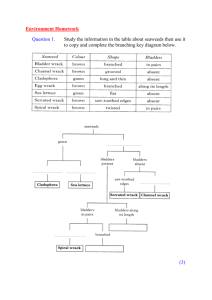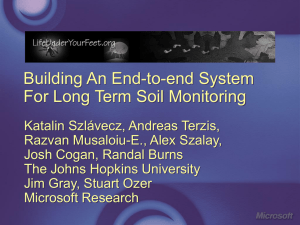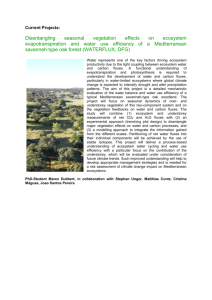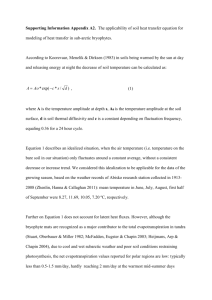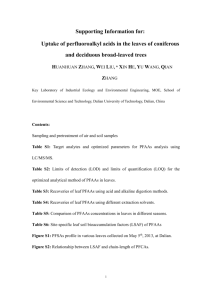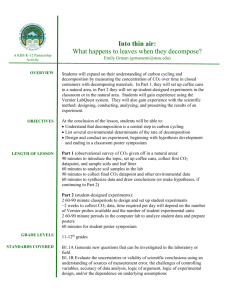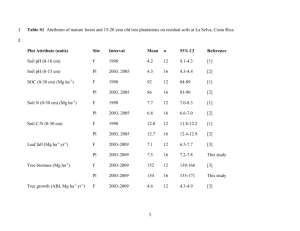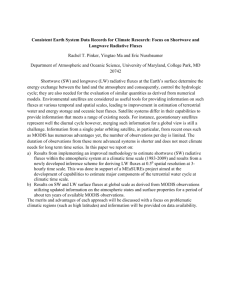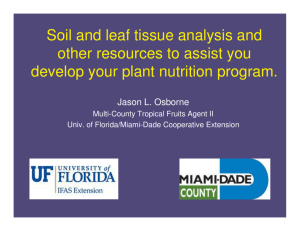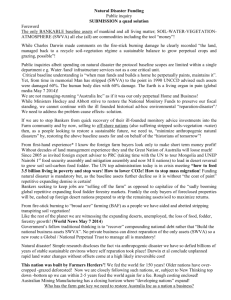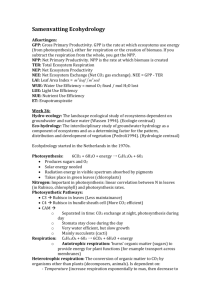A nitrogen addition experiment in a coastal Mediterranean Ecosystem
advertisement
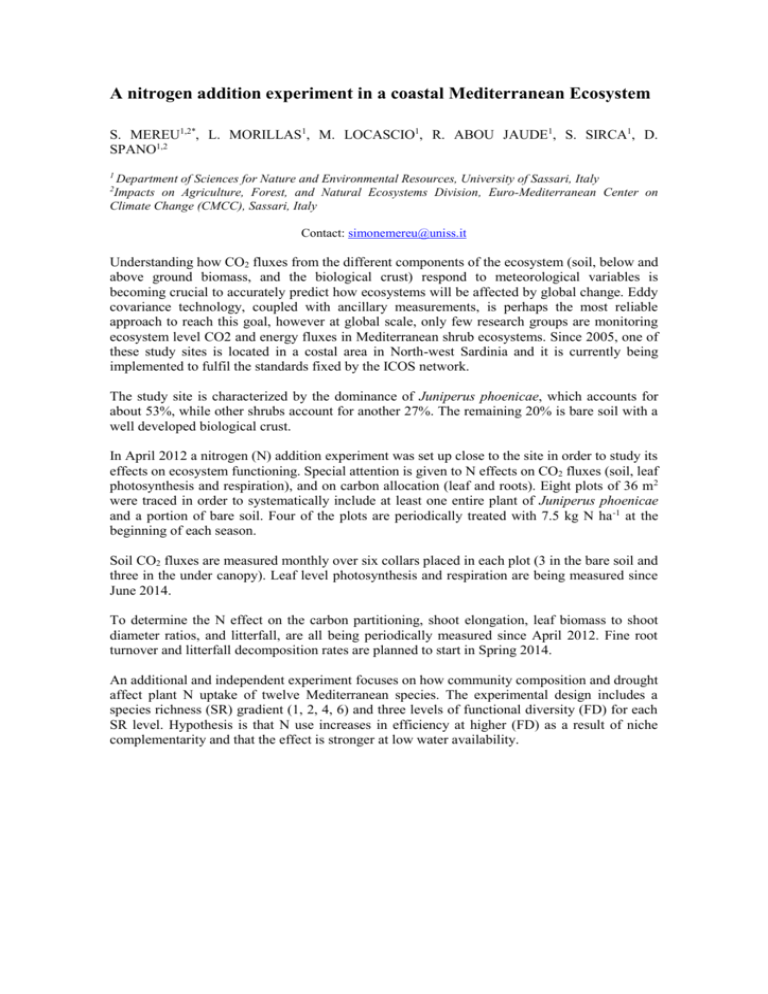
A nitrogen addition experiment in a coastal Mediterranean Ecosystem S. MEREU1,2*, L. MORILLAS1, M. LOCASCIO1, R. ABOU JAUDE1, S. SIRCA1, D. SPANO1,2 1 Department of Sciences for Nature and Environmental Resources, University of Sassari, Italy Impacts on Agriculture, Forest, and Natural Ecosystems Division, Euro-Mediterranean Center on Climate Change (CMCC), Sassari, Italy 2 Contact: simonemereu@uniss.it Understanding how CO2 fluxes from the different components of the ecosystem (soil, below and above ground biomass, and the biological crust) respond to meteorological variables is becoming crucial to accurately predict how ecosystems will be affected by global change. Eddy covariance technology, coupled with ancillary measurements, is perhaps the most reliable approach to reach this goal, however at global scale, only few research groups are monitoring ecosystem level CO2 and energy fluxes in Mediterranean shrub ecosystems. Since 2005, one of these study sites is located in a costal area in North-west Sardinia and it is currently being implemented to fulfil the standards fixed by the ICOS network. The study site is characterized by the dominance of Juniperus phoenicae, which accounts for about 53%, while other shrubs account for another 27%. The remaining 20% is bare soil with a well developed biological crust. In April 2012 a nitrogen (N) addition experiment was set up close to the site in order to study its effects on ecosystem functioning. Special attention is given to N effects on CO2 fluxes (soil, leaf photosynthesis and respiration), and on carbon allocation (leaf and roots). Eight plots of 36 m2 were traced in order to systematically include at least one entire plant of Juniperus phoenicae and a portion of bare soil. Four of the plots are periodically treated with 7.5 kg N ha -1 at the beginning of each season. Soil CO2 fluxes are measured monthly over six collars placed in each plot (3 in the bare soil and three in the under canopy). Leaf level photosynthesis and respiration are being measured since June 2014. To determine the N effect on the carbon partitioning, shoot elongation, leaf biomass to shoot diameter ratios, and litterfall, are all being periodically measured since April 2012. Fine root turnover and litterfall decomposition rates are planned to start in Spring 2014. An additional and independent experiment focuses on how community composition and drought affect plant N uptake of twelve Mediterranean species. The experimental design includes a species richness (SR) gradient (1, 2, 4, 6) and three levels of functional diversity (FD) for each SR level. Hypothesis is that N use increases in efficiency at higher (FD) as a result of niche complementarity and that the effect is stronger at low water availability.
